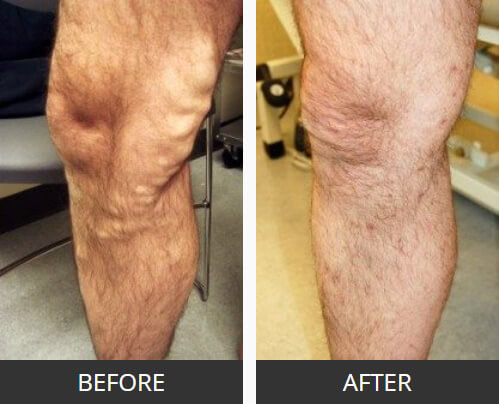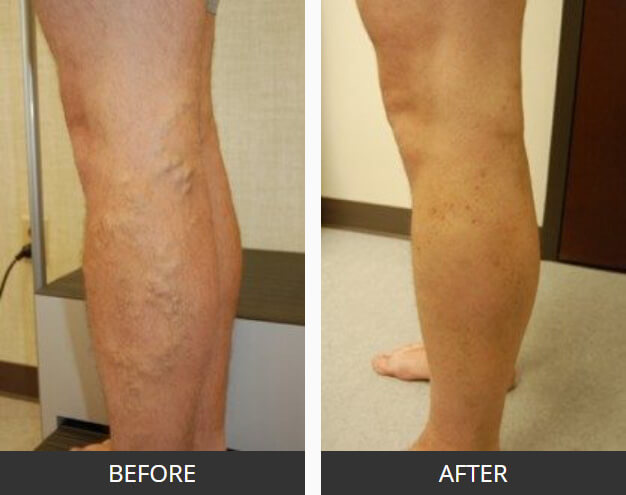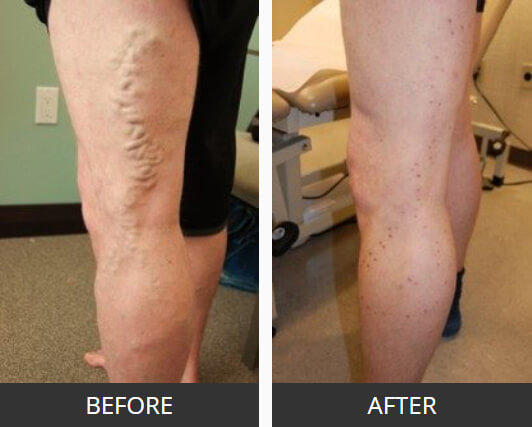Varicose Veins
What Are Varicose Veins
Varicose veins appear as large, bulging, rope-like veins on the legs. Typically associated with symptoms such as aching, tiredness, swelling and restlessness in the legs, varicose veins can be signs of underlying venous reflux disease.
Venous reflux occurs in millions of women and men around the world and is a progressive medical condition that can worsen if left untreated. Your genes and lifestyle make one more susceptible to developing vein disease.
If varicose veins run in your family, this significantly impacts the chances of developing venous reflux disease too.
Some Other Risk Factors Are:
- Family history of varicose veins
- Age
- Obesity
- Exposure to long periods of standing or sitting, such as certain occupations
- Pregnancy
- Trauma to the affected area
Varicose veins form in the superficial venous system of the legs as vein valves that pump blood from the legs back to the heart malfunction. These vein valves do not close properly, disrupting the blood flow so that blood pools and distends the vein walls. This can cause significant discomfort in the legs over time and becomes increasingly painful and debilitating over time, resulting in venous ulcers and non-healing ankle wounds in advanced cases.
Common Symptoms in the Lefs Associated With Venous Reflux Disease Include:
- Varicose veins
- Leg discomfort
- Leg swelling
- Aching
- Tiredness
- Itching
- Numbness
- Restless Legs
- Skin Discoloration
- Venous ulcers
In severe cases, medical issues such as skin changes and discoloration in the legs and non-healing wounds (venous ulcers) occur in the lower legs and around the ankles as the skin tissue breaks down from persistent, increased inflammation in the legs and deoxygenated blood that pools in the veins. 60% of cases with active venous ulcers are associated with underlying venous reflux disease in the perforator venous system. We can heal and stop the formation of ulcers with proper vein treatment such as thermal therapy with radiofrequency treatment (Venefit) or laser treatment (EVLT).
Varicose Vein Treatment
Northwest Vein & Aesthetic Center specializes in varicose vein treatment and venous reflux disease, offering state-of-the art treatment to patients in Tacoma, Olympia, and the Seattle area. Our patients undergo a medical history review and thorough circulatory evaluation to diagnose the concern. A non-invasive ultrasound exam is required to gain a complete understanding of venous system issues, and allows us to customize a treatment plan for each individual with confirmed varicose veins and venous disease. If there is no medical issue present, we also offer therapies to treat the cosmetic nature of the issue with sclerotherapy for visible surface veins.
Varicose vein treatments and venous ulcer treatments can range from conservative measures that control symptoms to non-surgical procedures which improve circulation and leave the leg feeling and looking better quickly! Based on your condition, we will work with you to develop the treatment that best suits you. Procedures are performed right in our office with no downtime, and are covered by most insurance plans. Painful symptoms resolve rapidly, often within 1-2 days in less advanced cases, and will continue to improve over time. Cosmetic improvement of varicose veins will steadily improve as the blood flow re-directs itself to healthy veins.
These therapies have become the gold standard in comprehensive vein care, versus surgeries like vein stripping and ligation, which we tend to avoid. Our vein experts may also combine therapies depending on the individual.
Vein Treatment Options
Thermal Therapy
Gently heats veins from the inside out, causing collagen contraction of the vein wall for closure.
VenaSeal
Seals veins using medically proven adhesive for immediate results.
Clarivein
Combines sclerosant agent and mechanical power to disrupt improper blood flow and seal the diseased vein.
Microphlebetomy
Removes micro-segments of affected veins and disrupts blood flow in diseased vein networks for immediate visual reduction of bulging veins. If performed, typically combined with thermal therapy in the affected area(s).
Frequently Asked Questions
Still have questions about varicose veins, venous reflux disease and vein treatment options? Please see our list of Frequency Asked Questions to help address your concerns. To learn more about your vein treatment options, contact our office at (253) 857-8346 or schedule an appointment online.
Reference
Gloviczki P, et al. The care of patients with varicose veins and associated chronic diseases: clinical practice guidelines of the Society for Vascular Surgery and the American Venous Forum. JVS; May 2011.



